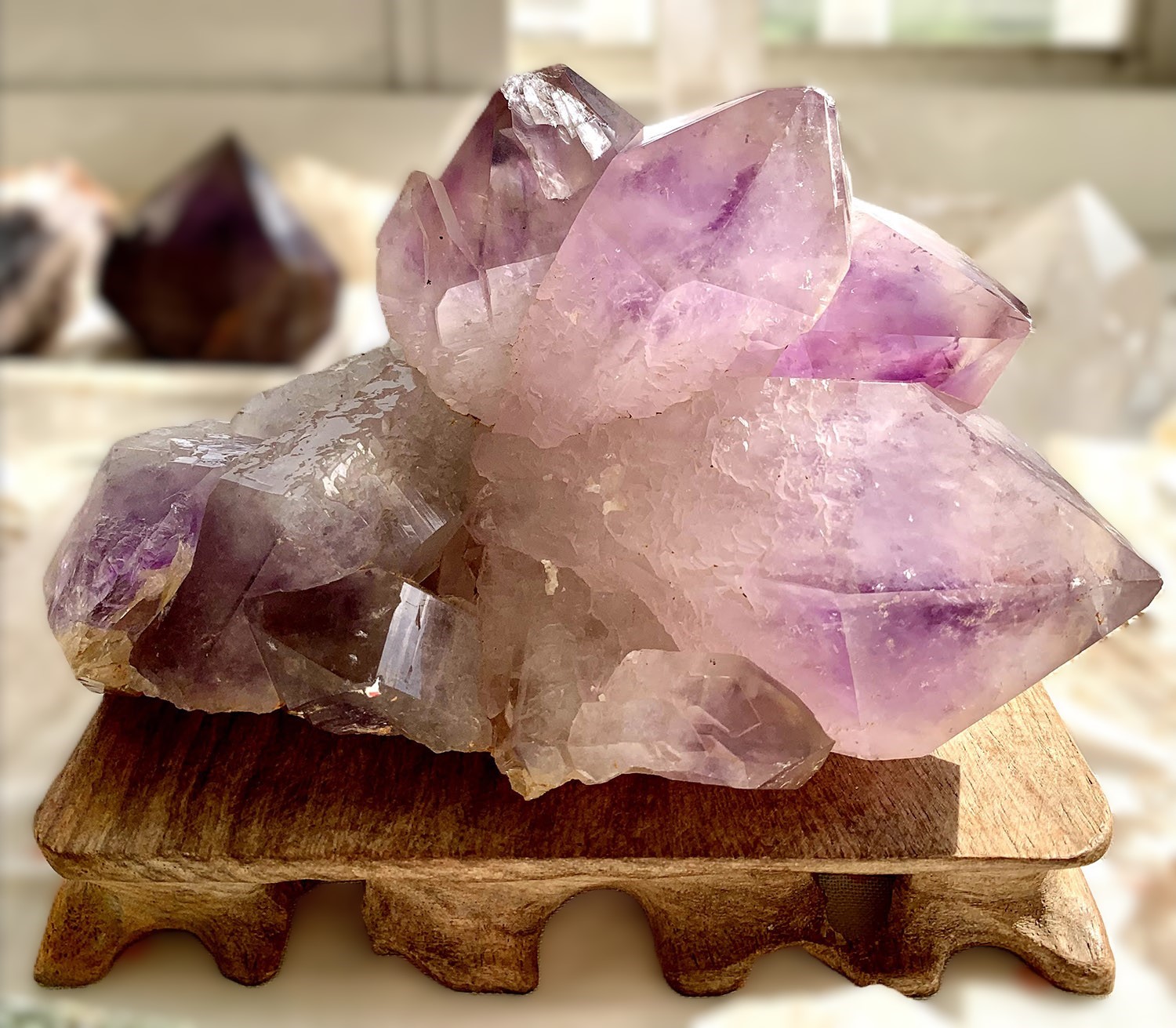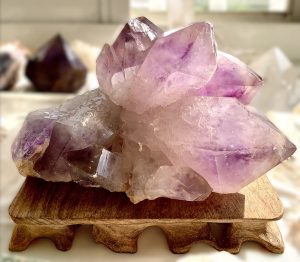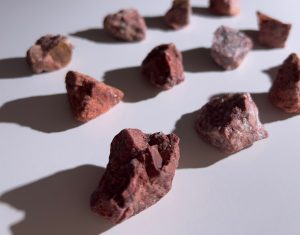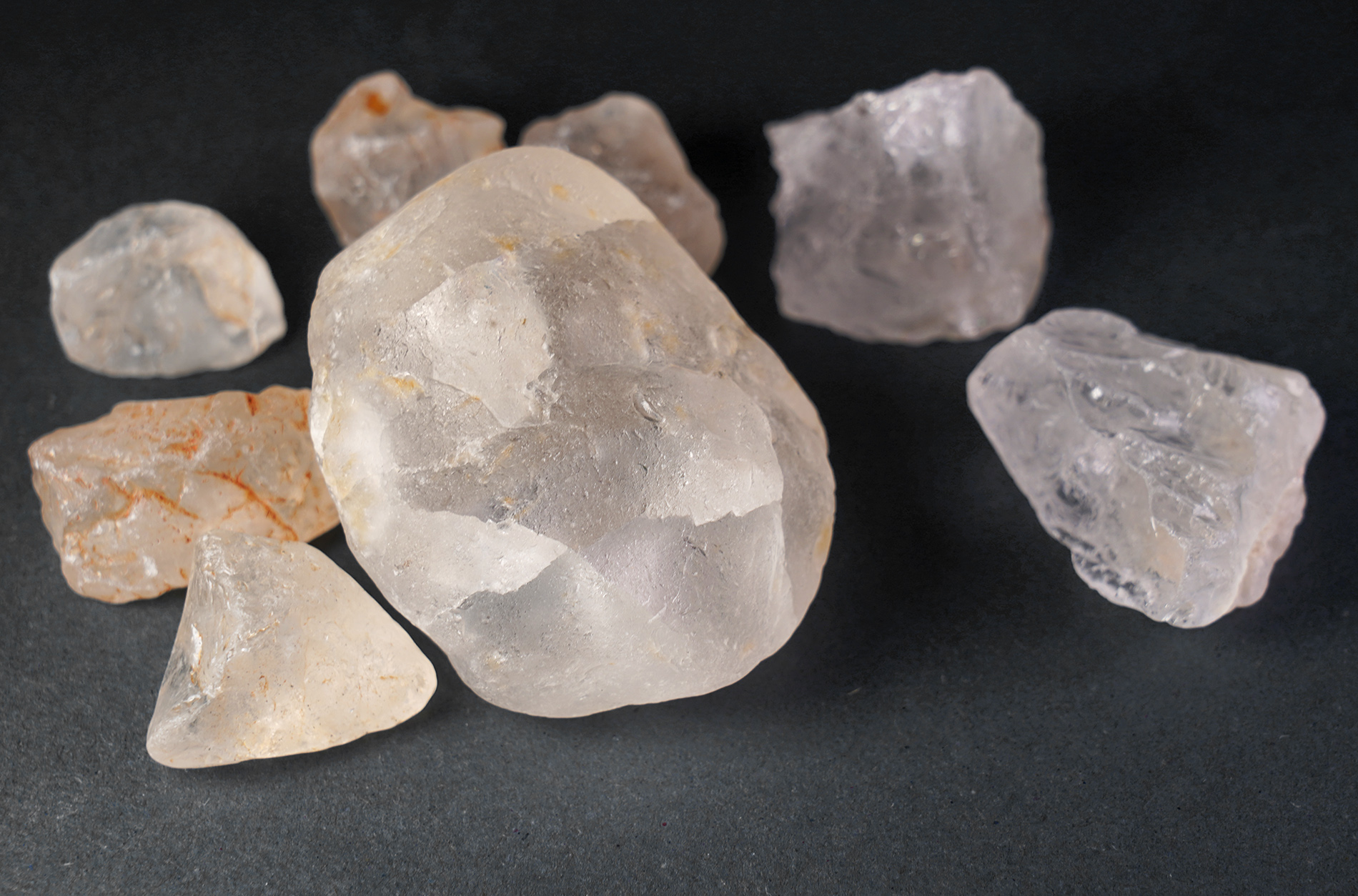Content navigation
Amethyst appeared in human history as early as the 20th century BCE (around 2000 BCE), and possibly even as early as 3000 BCE. It has been recorded across various histories, cultures, legends, and religions. Some evidence even suggests that as far back as 25,000 BCE, people of Neolithic Europe were already using amethyst.
Next, let us explore how amethyst has journeyed through the many chapters of human history across different fields, and then move into its spiritual qualities.
The Most Widely Known Legend About Amethyst
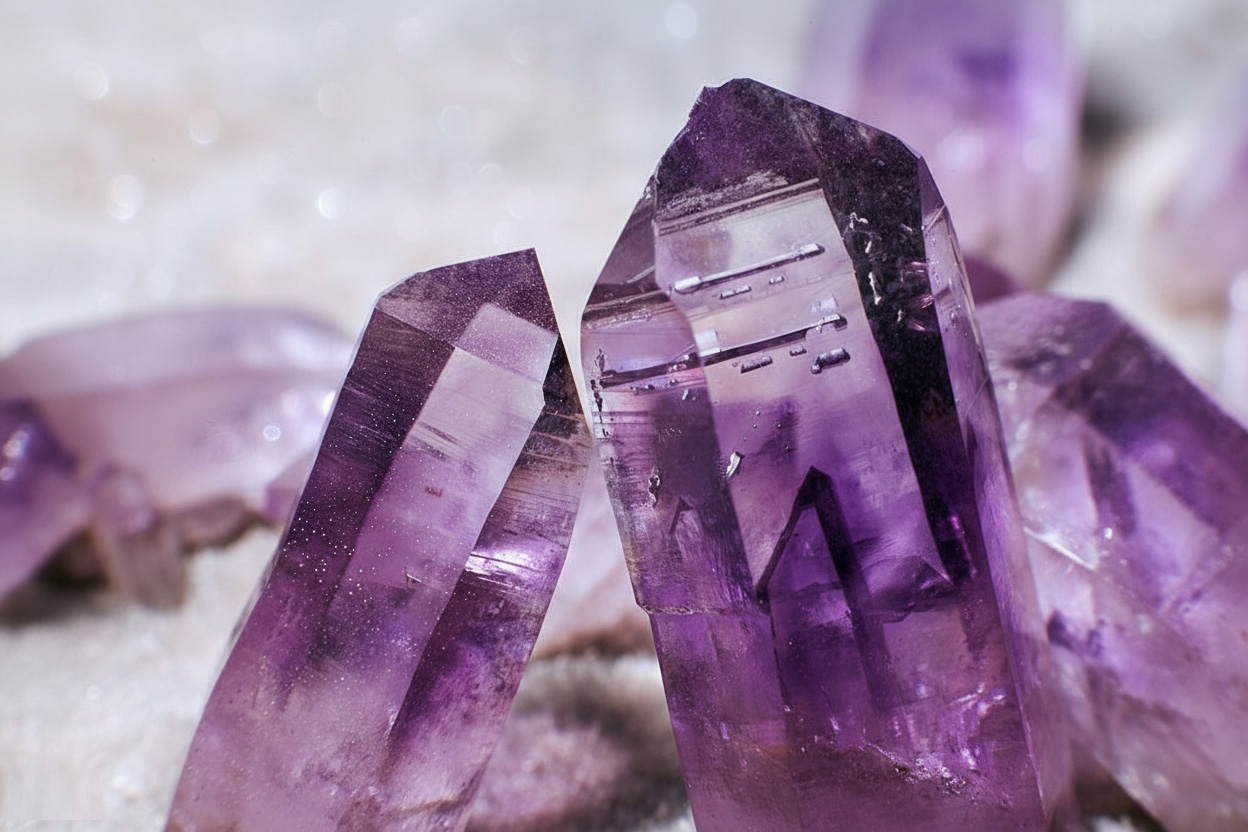
The ancient Greeks and Romans believed that amethyst could prevent intoxication. When they wished to drink freely, they thought that carrying or wearing amethyst would keep them from getting drunk — some even claimed that holding it in the mouth could help (hey, wouldn’t you accidentally swallow the crystal while drinking? XD). This belief in amethyst’s anti-drunkenness power later evolved into a series of myths and legends — here is the most well-known one:
Long ago, a beautiful maiden named Amethyst (from the Greek Amethystos) was on her way to pay homage to the goddess Artemis. On her journey, she encountered the furious god of wine, Dionysus, who had just been insulted by a mortal and fell into a blind rage—perhaps fueled by wine itself. In his madness, he vowed to unleash his wrath upon the next human who crossed his path. When he saw the maiden, he released two fierce tigers to attack her. As the beasts charged toward the innocent girl, the goddess Artemis intervened, transforming her into a pure, clear crystal to protect her from a cruel fate. Seeing what he had done, Dionysus was struck with deep remorse and sorrow. To atone for his reckless act, he poured his wine upon the crystal as an offering, staining it a deep violet hue. From then on, the maiden’s name—Amethystos—was given to the crystal we now know as Amethyst.
There is also another slightly different version of the story. The main events remain the same, but the cause of Dionysus’s anger was unrequited love. On the day the beautiful maiden was on her way to the temple of the goddess, the god of wine confessed his love to her along the road. When she refused him, angered and humiliated, he unleashed the events that led to the story above.
Another version of the story tells that the maiden rejected the god’s love and prayed to the goddess to preserve her purity. To protect her, the goddess transformed the girl into a clear, pure crystal. Saddened by this, the god poured his wine over the crystal, staining it a deep shade of purple.
PS. The deities mentioned in the story above belong to ancient Greek mythology. However, in some Roman versions, the gods are known as Bacchus, the god of wine, and Diana, the goddess of the hunt.
The origin of this legend is said to come from a poem written by the Renaissance romantic poet Rémy Belleau, who was known for his paradoxical poems praising simple things and his verses about gemstones. Regardless of its literary roots, amethyst has been associated with the prevention of intoxication since ancient Greece. The Greek word Amethystos literally means “not intoxicated” or “to recover from drunkenness.”
The Royal Symbolism of Amethyst
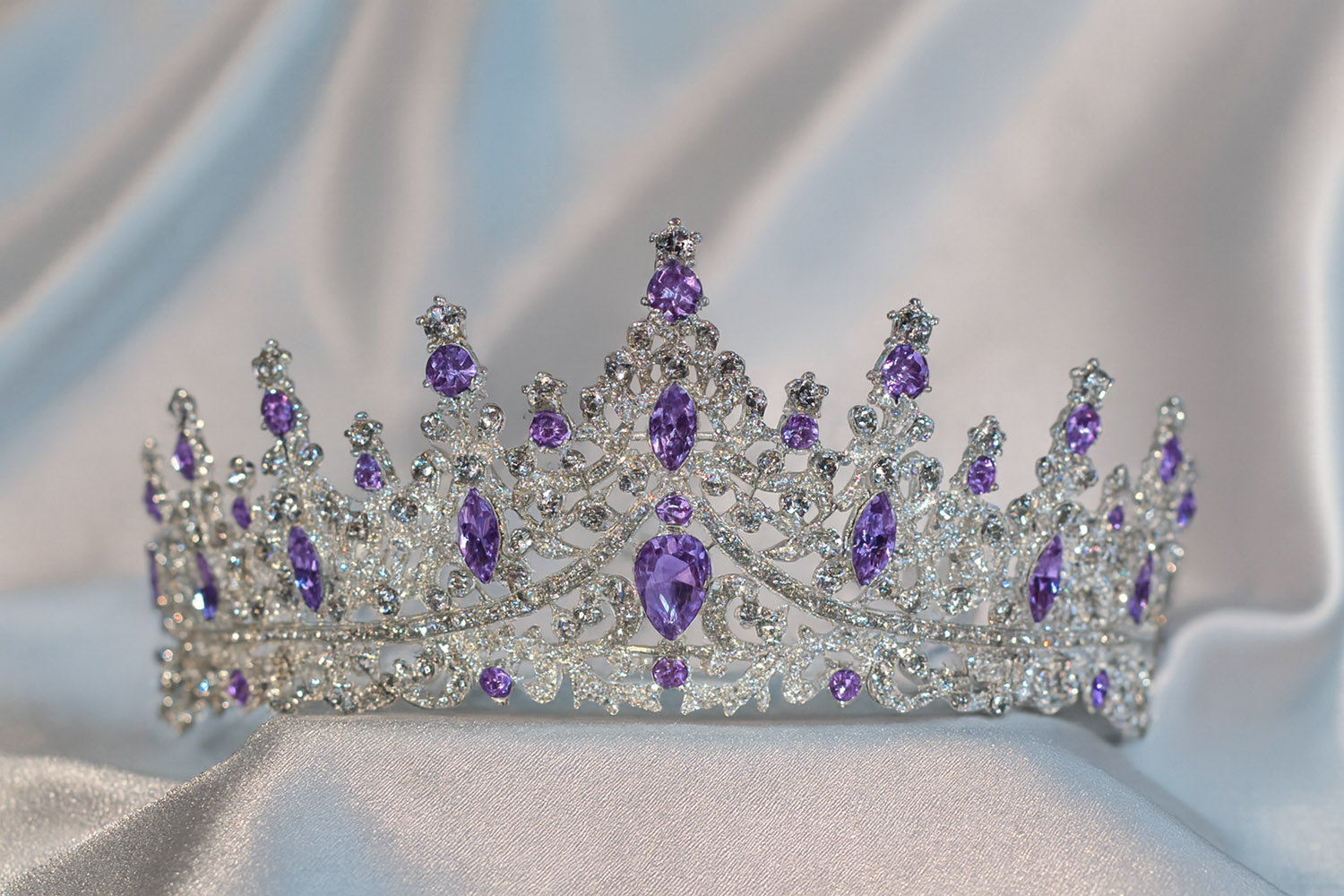
During the Middle Ages, the British royal family adorned themselves with amethyst as a symbol of royalty — a tradition that still leaves traces today. In 1660, when King Charles II restored the monarchy, amethyst was used among the jewels in the royal crown. In many historical records, amethyst has long been regarded as a gemstone of choice for crowns. In Egypt, amulets and jewelry made of amethyst dating back to around 3000 BCE have been discovered. A scarab-shaped bracelet carved from amethyst was found in the tomb of Tutankhamun, and some researchers suggest there is strong evidence that Cleopatra herself wore amethyst.
Many pieces of evidence show that the ancient Egyptians had a deep fondness for amethyst. They crafted amethyst into amulets, which served both as a form of prayer and as protection against harm. Some of these amulets were even carved into the shapes of animals.
This is not surprising, as for a long period in history, the status and value of amethyst were comparable to those of other precious gemstones — even diamonds. It was also regarded as a symbol of nobility and power, and thus, in earlier times, only royalty and the wealthy could afford to possess it. It was not until modern times, with large-scale mining and production, that amethyst became a more accessible gemstone.
The Religious Significance of Amethyst
Over time, the association between amethyst and the quality of “sobriety” expanded to embody devotion and virtue. Bishops and priests incorporated amethyst into their rings and other religious ornaments, said to symbolize abstinence and spiritual clarity.
Furthermore, the amethyst’s association with calming passion and tempering desire led some early Christians to connect the stone with Christ himself. They believed that its purple hue represented spiritual purity, while its blend of violet and red tones symbolized the purification and refinement born from suffering. Some even saw these colors as reminders of Christ’s wounds and passion, and thus amethyst was sometimes used to aid in the healing of wounds.
According to some historical accounts, Saint Valentine wore an amethyst ring engraved with the image of Cupid. For those familiar with Old Testament history, amethyst was one of the twelve gemstones representing the twelve tribes of Israel — and later came to symbolize the twelve apostles. In the Book of Exodus, amethyst is also mentioned as one of the twelve stones set into the breastplate of the high priest. The concept of birthstones is believed to have originated from these twelve sacred stones — and amethyst is the birthstone of February.
Other Traces of History
Throughout history — and even today — many wearers of amethyst have cherished it for its symbolic meaning and beauty. Leonardo da Vinci once wrote that amethyst helps to enhance intelligence and dispel evil thoughts. In more recent history, medieval European warriors also wore amethyst ornaments to help them remain clear-minded in battle and to provide protection.
Across various spiritual and metaphysical traditions, amethyst has long held a place of honor. Beyond its protective qualities, it helps us connect with the spiritual realms. From ancient times to the present, countless spiritual practitioners have worked with amethyst. It is truly a stone that transcends time and space, carrying an infinite presence.
The following excerpt is from The Books of Stones
Translator: Lydia
Interestingly, many of the spiritual qualities attributed to amethyst over the past centuries are remarkably similar to the traits people intuitively recognize in it today. Indeed, it is fitting to regard amethyst as a stone of spiritual protection and purification. It helps curb overindulgence and break harmful habits, making it a useful aid for those seeking to quit smoking, drinking, or substance dependency. Amethyst stimulates the crown chakra, supporting meditation and helping the mind find stillness while reaching higher states of consciousness. It clears negative influences and attachments from one’s energy field, promoting the formation of an energetic “shield” — a spiritual light field surrounding the body that protects against negative energies from the environment.
Those familiar with the story of Saint Germain may recall the legendary “Violet Flame,” the spiritual fire of purification. Students and followers were encouraged to invoke this flame to cleanse karmic burdens or illness and to protect themselves from psychic attack. This corresponds directly to the subtle vibrational field emitted by amethyst, which helps one attune to and connect with this benevolent energy.
Amethyst is an ideal stone for enhancing one’s physical environment. Placing clusters, geodes, or crystals of amethyst in your home, meditation room, or even in your car can create a sense of being surrounded and protected by a “bubble of light.” For this reason, amethyst is highly recommended for everyone — from healers and psychologists to teachers and even truck drivers. If someone is ill, placing a piece of amethyst in the room can help maintain a clear and healing atmosphere. Wearing amethyst helps keep the body’s inner space and energy field balanced and healthy. In all cases, it is best to cleanse your amethyst regularly. The simplest way is to rinse the stone under running water for less than a minute while affirming in your mind the intention of purification.
In terms of spiritual protection, amethyst is especially powerful when used together with Moldavite. This is a potent combination for energetic shielding and spiritual defense. When paired with rose quartz, it also brings in the vibration of love. Amethyst harmonizes beautifully with many quartz-family minerals, including citrine, smoky quartz, clear quartz, chrysoprase, opal, tiger’s eye, and all varieties of chalcedony. Combined with sugilite, it forms one of the best pairings for releasing addictive behaviors. Other stones that strengthen amethyst’s protective qualities include black tourmaline, healing gold (pyrite or magnetite), obsidian, and jet.
When people begin to connect with the mineral kingdom, amethyst is often one of the first stones that captures their attention. Its beautiful violet light, combined with its high-frequency and gentle energy, makes it an essential companion in the toolkit of any lightworker. Amethyst is primarily a stone of the Wind element. The Wind element stimulates thought, intuition, and telepathic awareness, enhancing one’s connection to the spiritual realms. With these qualities, amethyst becomes a powerful instrument for spiritual expansion and higher understanding.
Amethyst is a classic tool for meditation. Its energy allows one to easily enter a meditative state while maintaining lucid awareness during communion with the Divine. The vibration of amethyst stimulates higher thought and enhances brain function. Because it activates the third eye, crown, and etheric chakras, amethyst is a natural choice for psychic and intuitive work. Its high-frequency energy forms a shield against lower vibrations, making it an essential protection stone for those engaged in spiritual or intuitive practices. The energy of amethyst weaves a cocoon of light around the aura, creating a powerful field of resonance that helps one remain clear and centered while staying open to spiritual guidance and intuitive insight.
Amethyst stimulates higher thought, allowing one to perceive the dynamics and underlying causes of life experiences with greater clarity. Through this enhanced mental balance and clarity, it is especially helpful in overcoming addictions, counteracting the effects of substances on the brain, while transmitting its own calm and joyful energy. Amethyst assists in decision-making, bringing both common sense and spiritual insight, and helps one to ground those insights into daily life.
In healing work, amethyst helps one understand the root causes of illness or imbalance. The clarity it brings allows for the recognition of harmful beliefs, behaviors, and habits that create energetic disharmony. It then assists in aligning with the higher will and taking inspired action under spiritual guidance. Amethyst is also known as the “Stone of Sobriety,” a name that refers to its power to help resist intoxication. It is an ideal stone for those seeking to release addictive patterns—whether in themselves or others. It helps uncover the underlying causes of addiction and supports the awareness of one’s own strength to overcome them.
Amethyst also helps one recognize the core experiences that lead toward their spiritual path. It supports forward movement along that path, inviting the guidance and assistance of spirit guides and angels. It encourages surrender to the Divine and helps one embody the spiritual power inherent in being a sacred creation. Amethyst opens and clears the third eye and crown chakras, accelerating the development of intuition and psychic awareness.
- Psychic Naisha Ahsian

